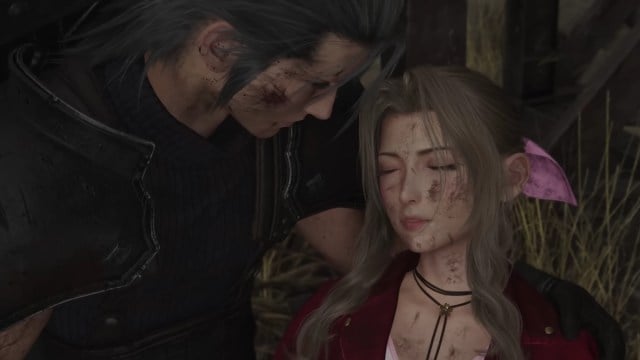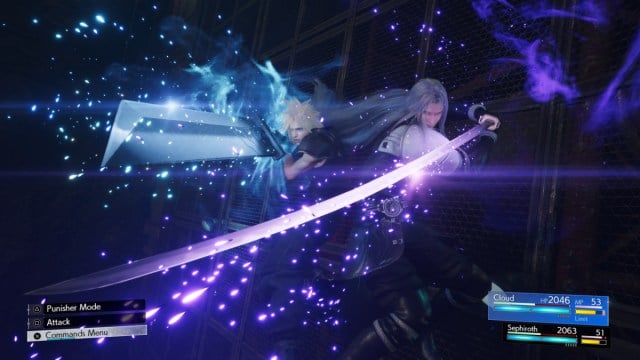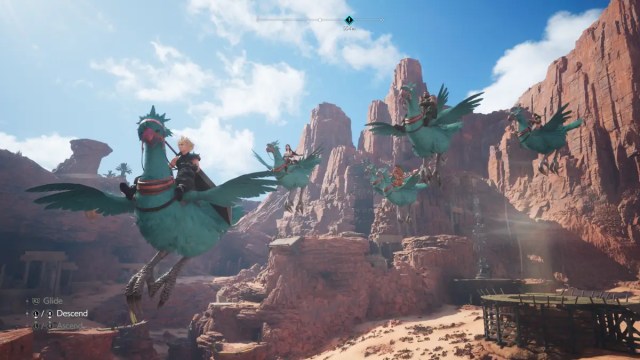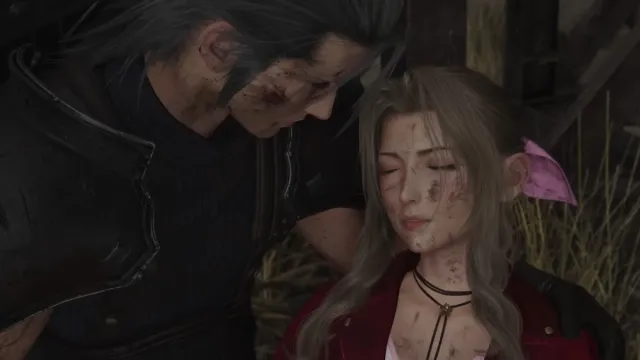Final Fantasy VII Rebirth on PlayStation 5
It’s hard to properly review Final Fantasy VII Rebirth, and not just because it’s the kind of AAA release most people already know will hold a certain level of quality.
To be sure, it is an amazing game. It looks and plays like a top-of-the-line offering meant for current-gen hardware, and it can effortlessly suck you into its story, gameplay, and overall experience for dozens of hours on end.
But beyond that, Final Fantasy VII Rebirth is such a lovingly crafted game that it’s impossible not to get sucked into the passion that exudes from its every pore. The team at Square Enix wanted to deliver a second act in their Final Fantasy VII Remake series that raised the bar even further than where the first game set it, and in almost every regard, they succeeded.
The Price of Defying Fate

For starters, the game doesn’t skimp on its narrative presentation. Picking up shortly after the end of FFVII Remake, it sees Cloud and the gang in hot pursuit of Sephiroth as they explore the outside world. While it might not actively be under the shadow of Shinra and its malevolent overlords, it’s still plenty dangerous; especially when Cloud’s deteriorating mental state starts to rear its head thanks to Sephiroth’s influence.
Simultaneously, an entirely new plot plays out from Zack Fair’s point of view. Having survived his fateful confrontation with the Shinra forces that pursued him and Cloud, he returns to Midgar to find Aerith in critical condition and the rest of the party presumed dead after their confrontation with the Whispers on the outskirts of the city. Not only that, but a giant rift has opened above the city, ominously silent throughout all the chaos below.
Both these storylines interwine as the game progresses and drive it further towards its status as a reimagining instead of a straight Remake. It’s to the game’s benefit, and helps it stand apart from FFVII Remake as a worthwhile story to experience in its own right. I was just as enraptured by the tried and true scenes adapted from the original game as I was by the new elements, and was fully reeled in as the plot moved toward its crescendo.
The presentation only helped further the immersion. On the visuals front, the game is as stunning as its predecessor, and then some. Both the characters and the wider world pop with hyper-realistic beauty, and every given moment is a treat for the eyes.
In terms of audio, there’s just as much to enjoy. Every member of the voice cast gives it their all with heartfelt and impactful performances. The music accents everything from the action-packed cutscenes to the more serene exploration segments perfectly, and the sound design of explosive spells, clashing swords, and bestial roars helps to keep players enthralled by the experience all the more.
Combat Fit for a SOLDIER

But then, the real star of the show is the gameplay.
While most of the central mechanics are largely untouched from FF VII Remake, Final Fantasy VII Rebirth does tweak and refine them so that they’re easier than ever to use. Players can tweak their party layout at will and save presets to minimize time swapping out configurations, and the application of Skill Points is now done via a much more streamlined and easy-to-read sphere grid.
And all that’s on top of existing features. You have the ability to swap between party members for free control on the battlefield, and Materia is a breeze to equip, combine, and utilize across the many characters you can bring into battle. The gameplay is also still a blend of turn-based and action too, so there’s no need to worry about a loss of depth or engagement.
At the same time though, there are plenty of new bells and whistles that make the experience that much more enthralling. Key among them are the new Synergy Abilities in combat, which play off of the ATB gauge and the usage of multiple party members. For every spell, offensive ability, and technique you spend ATB charges with, you gain points toward a Synergy Ability that can be used against foes for massive damage; and, in some cases, a temporary buff to your character.
The only catch is that both characters have to meet the Synergy Point requirements, which motivates you to switch across multiple characters during a fight instead of sticking to one or two.
It’s a clever design choice, and it works perfectly with the existing systems. I spent plenty of time carefully swapping between party members until I was ready to unleash a Synergy ability against my opponent, and reveled in the bombastic techniques that were on par with the equally flashy Summons.
Variety Is the Spice of Life

And all of that is just the combat of Final Fantasy VII Rebirth.
Outside of battles, there are an absurd number of mini games to take part in both for the main story and as fun distractions on the side, and I do mean absurd. There are shooting galleries, flight challenges, rhythm games, Chocobo races, and a fully fleshed-out card game known as Queen’s Blood that even has its own substory which plays out entirely in the background of the wider plot. And that’s just to name a few.
The wildest part of all, though, is that almost all of them are a blast to play. Each one feels fully fleshed out in a way that made me want to go back to them again and again, and I’d spent far more time than I needed to delving into each one to see the full breadth of what it offered.
An Open World of Repetition

The only criticism I can truly hold against Final Fantasy VII Rebirth is that its open world design feels padded early on.
Whereas FFVII Remake had several open-ended sandboxes for players to explore via the different sectors of Midgar, the sequel has different regions which are interconnected via an honest-to-goodness world ripe for exploration.
While there may be dozens of activities to carry out within a handful of different regions — and each has plenty of smaller locales to discover off the beaten path — most of those in the first few regions revolve around a select few mini games or scavenger hunts that are copy-pasted across every region. It doesn’t take long for them to become repetitive, and I’d be lying if I said I didn’t forgo most of the ones that weren’t absolutely necessary to my progression.
Which is a shame, because there are some genuinely good examples of open world side content hidden among these bad apples. For every Ubisoft-style tower I had to climb to illuminate points of interest on the map, there were side quests with whimsical premises like sentient Fort Condor pieces who needed my help to save their commander. Each identical rhythm game offered by Life Stream Crystals was matched by special battles with unique variants of a region’s fiends, and led to challenging duels with rarer mini bosses.
The game does throw some much-needed twists into this formula in the later regions, so it’s at least not an issue that persists long-term. Still, though, it’s unfortunate that the game makes such a bad first impression with what players can expect from the content of its larger settings.
Final Fantasy VII Rebirth is, for all intents and purposes, a phenomenal second act in the Remake series. Though it’s open world design isn’t perfect, the game is finely honed in every other area and provides as luxurious of an experience as FF VII Remake did. It’s well worth a look for new and old fans alike, and is sure to keep everyone occupied while we wait for the conclusion to this reinvented epic.
Pros
Fantastic narrative and story
Welcome additions to the established gameplay formula
Creative side quests
Gorgeous graphics and phenomenal sound design
Cons
Open world elements can get repetitive
Release Date
Feb. 29, 2024
Copy provided by Publisher













